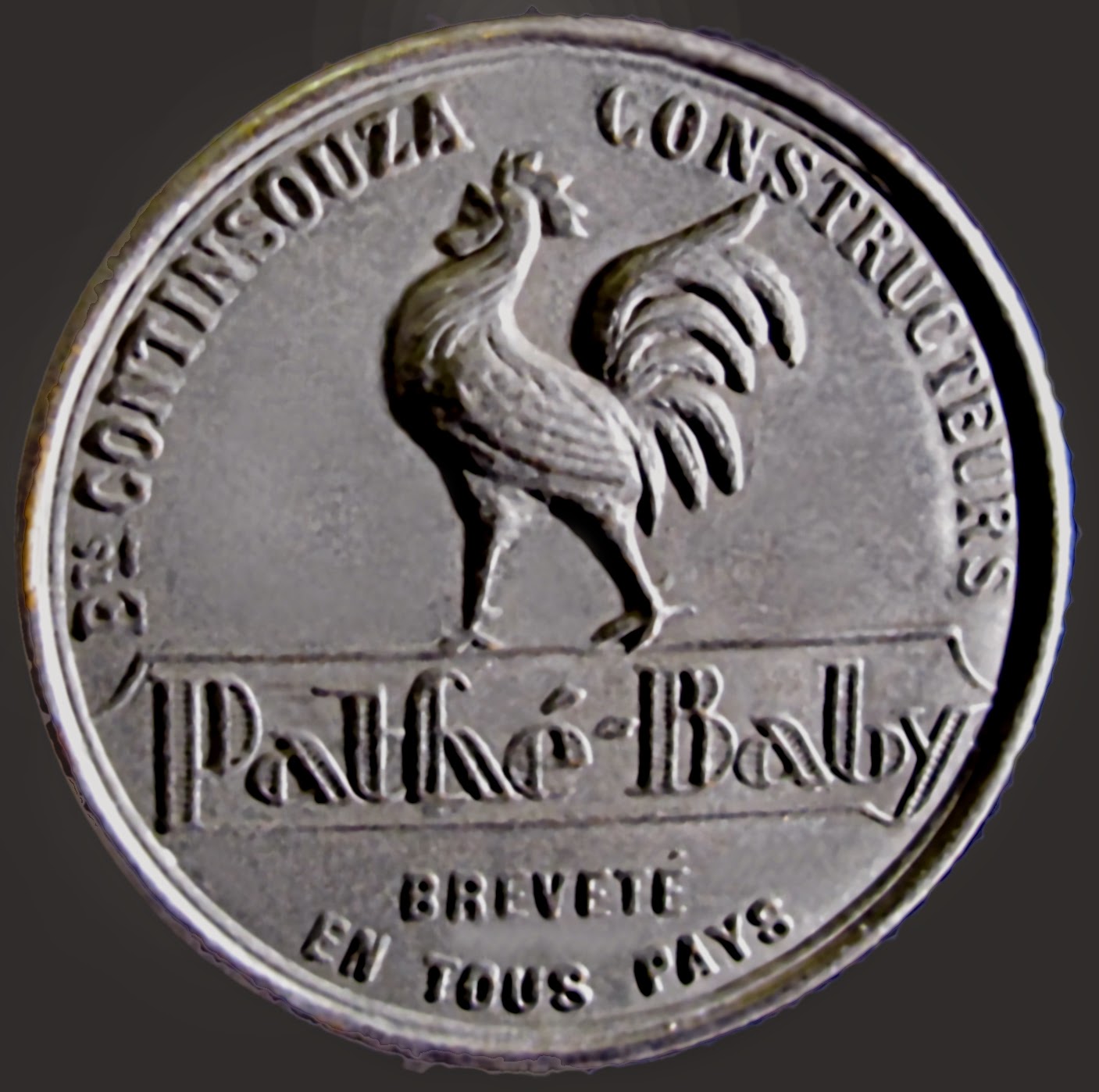PARIS 1922
CINEMATOGRAPHY AS ART
This ingenious and odd artefact was far from a toy. The Pathé Co had been dominating professional film production before WWI. Selling short excerpts from feature movies provided a new form of advertising. This very first simple home film projector for 9.5 mm film had a lot of outstanding new and clever design solutions.
The artistic logo plate on the rear side is a proof from the well known factory of high quality cinema equipment. The rooster was their trade mark for many years.
The film size 9.5 mm kept film material costs down. Perforation in the centre increased the space of picture area. It was bigger and brighter than the 8 mm format films introduced by Kodak 10 years later.
The lab could make three 9.5 mm copies simultaneously on the professional 35 mm film stock. The vast Pathé Co had gathered resources and technical skills to go their own way and avoid patent infringements.
The very small cartridges though held only about 18 m of film. But among other clever inventions, the projector had a new gizmo to enhance the duration of the performances.
Thanks to the low volt lamp and non-flammable film base every text frame could be brought to stand still. The tiny notch at the edge of the film caused a mechanical sensor mechanism releasing the film-transport for ten seconds.
Ideal during the time, when silent movies was depending
on several dialog texts.
9, 5 mm format survived and end got refined for decades. Cameras were made by many other companies too. One of them was Eumig in Austria.
Another relic from 1906 compared to a standard 78 rpm, was a marvel of ingenuity. Using the same type of masters, the grooves were cut vertically rather than horizontally. So special record Pathé players had to be used. They were played at 100 rpm, starting from the centre of the record. The stylus was a round sapphire that didn't wear out. Depending on the recorded material, the diameter could vary from 21.6 to 50.8 cm!
The lab could make three 9.5 mm copies simultaneously on the professional 35 mm film stock. The vast Pathé Co had gathered resources and technical skills to go their own way and avoid patent infringements.
The very small cartridges though held only about 18 m of film. But among other clever inventions, the projector had a new gizmo to enhance the duration of the performances.
Thanks to the low volt lamp and non-flammable film base every text frame could be brought to stand still. The tiny notch at the edge of the film caused a mechanical sensor mechanism releasing the film-transport for ten seconds.
Ideal during the time, when silent movies was depending
on several dialog texts.
9, 5 mm format survived and end got refined for decades. Cameras were made by many other companies too. One of them was Eumig in Austria.
The Pathé Brothers had started their carrier in sound recording.
I am very impressed by these two entrepreneurs.
They dominated the French market in phonograph and film market for years. Starting by making recordings on cylinders and later on disc records, they used revolutionary new production methods. Cylinders were dubbed from high speed large-diameter master cylinders with a smart kind of mechanical panto-graph.Another relic from 1906 compared to a standard 78 rpm, was a marvel of ingenuity. Using the same type of masters, the grooves were cut vertically rather than horizontally. So special record Pathé players had to be used. They were played at 100 rpm, starting from the centre of the record. The stylus was a round sapphire that didn't wear out. Depending on the recorded material, the diameter could vary from 21.6 to 50.8 cm!
All these new inventions resulted in a considerable improved sound quality in those days.





















































